
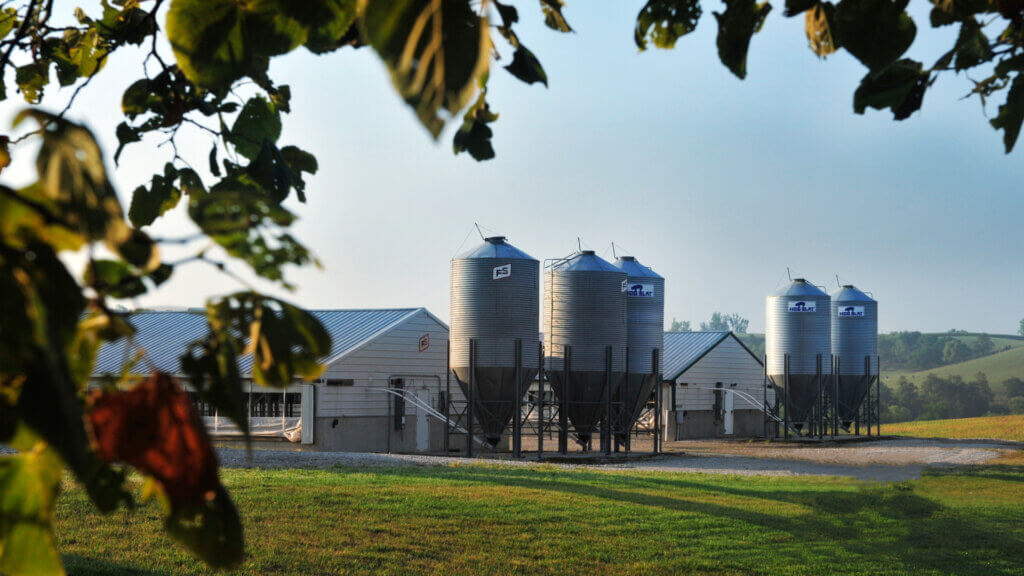
The Swine Health Information Center’s Wean-to-Harvest Biosecurity Research Program, funded in collaboration with the Foundation for Food & Agriculture Research and the Pork Checkoff, has selected five additional projects for funding after review of round two proposal submissions. This brings the total number of projects awarded by the program to 15 for addressing a significant biosecurity gap in US swine production. Institutions receiving awards in the second round are Lowe Consulting, Pipestone Research, Texas Tech University, University of Missouri, and University of Montreal. Real-time results of all projects will be shared as quickly as they become available.
The Wean-to-Harvest Biosecurity Program reflects SHIC’s responsiveness to an identified swine health vulnerability and collaborative efforts to stretch SHIC’s producer Checkoff funds to safeguard the health of the US swine herd. Proactively enhancing wean-to-harvest biosecurity will help control the next emerging disease in the US pork industry, part of SHIC’s mission.
The updated research priorities in the second round of proposal solicitation focused on site and transportation biosecurity in five targeted areas: 1) personnel biocontainment and bioexclusion, 2) mortality management, 3) truck wash efficiency, 4) alternatives to fixed truck wash, and 5) packing plant biocontainment. “These key areas were identified as research priorities in which new tools and technologies were needed to develop a comprehensive biosecurity approach for the pork industry,” remarked SHIC Associate Director Dr. Megan Niederwerder. Proposals underwent a competitive review process by a task force of industry stakeholders with funding recommendations approved by the SHIC Board of Directors, FFAR, and Pork Checkoff during their June 30, 2023, meeting.
“Each of the awarded research projects take a unique and novel approach to enhancing personnel or transport biosecurity. Investigations will determine the efficacy of new tools or validate novel technologies to reduce the risk of disease spread through these routes,” Dr. Niederwerder explained. “For example, they will look at updating protocols, such as the entry bench, and addressing farms’ labor challenges by reducing the number of individuals entering barns. Projects were reviewed for their value to pork producers and their ability to provide cost-effective biosecurity solutions on the farm.”
Titles of round two Wean-to-Harvest Biosecurity Program projects awarded are:
SHIC, FFAR, and Pork Checkoff launched the two-year Wean-to-Harvest Biosecurity Program in the fall of 2022. The first call for research proposals was announced in October 2022 with the goal of investigating cost-effective, innovative technologies, protocols, or ideas to enhance biosecurity during the wean-to-harvest phases of swine production. Round one projects launched in March 2023. Round two proposals were due in late April 2023 and are expected to begin in July-August 2023. A pool of approximately $2.3 million is available for the program, with approximately $1 million being awarded to the first round of projects.
Swine Health Information Center
The Swine Health Information Center, launched in 2015 with Pork Checkoff funding, protects and enhances the health of the US swine herd by minimizing the impact of disease threats through preparedness, coordinated communications, global disease monitoring, analysis of swine health data, and targeted research investments. As a conduit of information and research, SHIC encourages sharing of its publications and research. Forward, reprint, and quote SHIC material freely. For more information, visit http://www.swinehealth.org or contact Dr. Paul Sundberg at [email protected] or Dr. Megan Niederwerder at [email protected].
Foundation for Food & Agriculture Research
The Foundation for Food & Agriculture Research (FFAR) builds public-private partnerships to fund bold research addressing big food and agriculture challenges. FFAR was established in the 2014 Farm Bill to increase public agriculture research investments, fill knowledge gaps and complement the U.S. Department Agriculture’s research agenda. FFAR’s model matches federal funding from Congress with private funding, delivering a powerful return on taxpayer investment. Through collaboration and partnerships, FFAR advances actionable science benefiting farmers, consumers and the environment.
Connect: @FoundationFAR
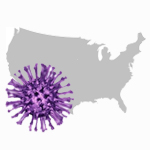
The SHIC-funded Domestic Swine Disease Surveillance Program was founded in 2017 with the goal of monitoring and reporting diagnostic data and trends of endemic diseases in US swine. Starting in September 2023, diagnostic data from the Indiana Animal Disease Diagnostic Laboratory at Purdue University will be included in the Swine Disease Reporting System. SDRS currently aggregates data from five veterinary diagnostic laboratories, including the Iowa State University VDL, University of Minnesota VDL, Kansas State University VDL, South Dakota State University ADRDL, and Ohio Animal Disease and Diagnostic Laboratory. With the addition of IADDL, the SDRS monthly report represents more than 96% of all swine samples submitted for testing across six VDLs in the US members of the National Animal Health Laboratory Network.
The Indiana Animal Disease Diagnostic Laboratory at Purdue is a Level 2 laboratory accredited by NAHLN. The project will begin by adding historical data from the lab per the protocol outlined in the SHIC-funded project. The next phase will add ongoing tests’ result data. Indiana ADDL producer and clientele anonymized data will be combined into a uniquely structured statistical database housed at the SDRS.
Including new veterinary diagnostic laboratories contributes to expanding the SDRS diagnostic test data by adding new regions. These acquisitions enhance the project’s representativeness and capability to rapidly identify emerging or re-emerging animal health threats, informing producers and veterinarians. Indiana stakeholders actively requested the inclusion of the Indiana ADDL at Purdue that annually receives over 5000 samples from hog farms in the state.
SDRS staff will continue working on data aggregation, data mining, interpretation, and summaries. Retrospective and prospective monitoring algorithms will be updated and revalidated to scan the agent-specific percentage of positive cases at an overall and state level for the states having cases tested at the Indiana ADDL at Purdue. Data will be shared daily via online dashboards along with monthly PDF, audio, and video reports. Monthly domestic disease monitoring reports are provided through the SHIC newsletter and published on the SHIC website.
The SDRS project, managed through the Iowa State University College of Veterinary Medicine, is the only publicly available source of swine health information from US animal disease labs including pathogen activity across all age groups, from boar studs to breeding herds to grow-finish pigs. The SDRS database contains information for for PCR based detection of seven porcine endemic agents (PRRSV, PEDV, PDCoV, TGEV, M hyo, PCV2, IAV, and IAV PCR subtyping information) and more than 1 million cases since 2006. Additionally, the SDRS also houses information for PRRSV ORF5 sequences classified by lineage and RFLP from participant labs. Confirmed porcine tissue disease diagnosis is also shared with the SDRS by the Iowa State University VDL. SDRS is positioned as one of the largest US and international databases for veterinary diagnostic information.
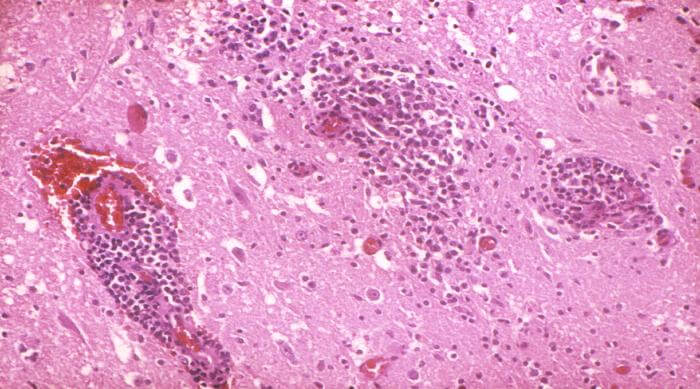
Due to the ongoing risk of Japanese encephalitis virus emergence in the US, the Swine Health Information Center funded a systematic literature review intended to increase understanding of the virus’s biology, components and dynamics of transmission, and environmental factors necessary for incursion and establishment. The recently completed systematic review is in addition to a separate JEV Risk Assessment funded by SHIC that is still in progress. As the US is considered a susceptible region with potential for the introduction of JEV, SHIC has focused on these projects designed to further strengthen US swine industry preparedness and inform response efforts, should they be needed.
Led by Dr. Natalia Cernicchiaro, Kansas State University, and in collaboration with researchers from the United States Department of Agriculture National Bio and Agro-Defense facility and the National Feral Swine Damage Management Program, the study synthesized existing information on the role of domestic and feral swine in the transmission of JEV through a systematic review of 228 articles deemed relevant in a process designed to identify knowledge gaps.
In results delivered to SHIC in June 2023, Dr. Cernicchiaro and colleagues provided information on US susceptibility to JEV related to the availability of competent mosquito vector species, susceptible maintenance avian hosts, as well as intensive travel and trade activities to and from Japanese encephalitis-affected countries. Additional information relevant to US risk is described, such as the similar climatic and environmental conditions to epidemic countries, lack of JEV surveillance, and the large populations of susceptible swine which can serve as amplification hosts. The considerable geographical expansion of JEV in recent decades, including the recent emergence of a new genotype in the eastern and southeastern Australian states, adds to US pork industry concern.
Relevant findings are included in the study summary and include the following.
JEV in swine is generally mild with a neurologic or reproductive presentation depending on the age and sex of the pigs. Although maternal antibodies can confer protection for longer than four months under field conditions, naïve piglets can manifest neurologic signs including ataxia and tremors which can progress to wasting disease or mortality. Reproductive disorders including stillbirths, abortions, mummified fetuses, and delayed farrowing can occur when sows are infected before 60 to 70 days of gestation. Orchitis, reduced sperm motility and temporary infertility have been reported in boars.
Typically, JEV infection is initiated following the bite of an infected mosquito. In the blood, the virus can be detected as early as one day post-infection and can persist for four to five days, regardless of the portal of entry. Once pigs are exposed to the virus, on average it takes three to six days, and up to 21 days, to observe clinical signs. Amplification and persistence mechanisms, as well as the effect of genotype in infectivity, transmission and pathogenesis in swine need to be better explained.
Recent evidence suggests that direct contact between pigs may also play a role in transmission, yet additional research is needed to ensure replication of those findings and further evaluate its implications for pathogenesis and spread.
Serological testing followed by virus isolation for confirmation is recommended for diagnosis. During outbreak investigations, serial collection of serum samples in pigs is used to detect an increasing titer against JEV. Different tissues are amenable for virus isolation including spleen, liver, brain, sera, cerebrospinal fluid, tonsils, and oronasal fluids. In fetuses, stillbirths or neonates, virus may be isolated from brain, tonsil, spleen, placenta, thoracic or abdominal stillborn fluids. Serologic tests that demonstrate antibodies in fetuses also are useful in diagnosis.
Given no specific therapy is available for treating JEV infection in pigs, control either via mitigation of reproductive losses by vaccination or application of biosecurity practices is critical. Articles describing biosecurity practices for control and risk management at the farm level were very limited. Practices include the application and effectiveness of mosquito control and other pest management practices.
Vaccination against JEV is the most effective measure for controlling JEV in humans and pigs. Although there are no licensed JEV vaccines for pigs in the US, live attenuated vaccines have shown higher efficacy than inactivated vaccines in natural infection and challenge studies. Vaccinating the breeding stock can control viral amplification and reproductive disease in swine. Before the mosquito season starts, young gilts and boars can be vaccinated twice with a 14 to 21 day interval. In endemic areas, growing pigs are also often vaccinated.
Evidence on risk factors for JEV morbidity pertaining to pigs and their production environment, genetic, sex, and breed differences, as well as management practices at the farm, barn or animal levels, among others, were infrequent to nonexistent. Although some studies reported the use of pigs as sentinels of infection, the design, implementation, and effectiveness of surveillance programs in pigs was rarely described. Even though no peer-reviewed articles were retrieved on preparedness and response efforts related to pigs, national response plans for the animal and human health sectors from governments or other official entities are available from some countries where JEV is present.
Of note are all the resources and educational materials produced in response to the most recent JEV outbreaks by the Australian Government, Department of Health and Aged Care, including the Joint National JEV Outbreak response plan published in June 2023 (JEV outbreak plan). Economic assessments associated with swine, either domestic or feral, and JEV transmission, at the regional, country, state or farm levels were not identified with the search. Similarly, articles discussing impacts or implications of JE in pigs or swine operations were not available.
Pigs have a unique role in the JEV transmission cycle as they can exhibit clinical signs of reproductive and neurological disease, as well as produce sufficient viremia to infect biting mosquito vectors. Provided in this review, knowledge of the dynamics of the disease process, modes of viral transmission, risks associated with infection, control and treatment options, as well as potential impacts of the disease in swine production, may inform researchers, stakeholders, and policy makers on effort prioritization and development of preparedness and response measures.
The full report will be available following publication in a scientific journal.
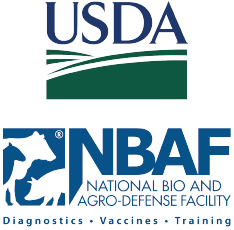
The potential for Japanese encephalitis virus transmission and spread in the US is the focus of a new investigation led by Dr. Natalia Cernicchiaro, Kansas State University College of Veterinary Medicine, and Dr. John Drake, Director of the Center for the Ecology of Infectious Diseases at the University of Georgia. With funding from and in collaboration with researchers from the United States Department of Agriculture, National Bio and Agro-Defense Facility, Foreign Arthropod-Borne Animal Diseases Research Unit, the team of researchers commenced the multi-year grant on August 1, 2023. Researchers will model transmission dynamics in the case of a JEV incursion, integrating climatic and regional factors, under specific local conditions, considering vectored and vector-free transmission among swine and other animal hosts. Additionally, a JEV spatial interaction model will be built to estimate, predict, and forecast how a JEV outbreak in the US may spatiotemporally spread.
The US represents an area favorable for the introduction of Japanese encephalitis, a zoonotic, emerging disease transmitted primarily by Culex mosquitoes infected with the virus. Previous incursions of other mosquito-borne flaviviruses in the US include West Nile virus and Zika virus. Knowing the availability of competent insect vectors, susceptible avian and porcine hosts, and environmental conditions similar to those in epidemic countries creates concern in the US pork industry as well as with public health officials as JEV is a mosquito disease capable of affecting humans as well as pigs.
Entities concerned about the potential of a JEV incursion in the US include the Swine Health Information Center which has funded several projects designed to further strengthen US swine industry preparedness as well as inform response efforts, should they be needed. Some of SHIC’s efforts include the implementation of a systematic literature review intended to increase understanding of the virus’s biology, components and dynamics of transmission, and environmental factors necessary for incursion and establishment. In addition, the same team at Kansas State University conducting the review is re-assessing pathways of JEV introduction into the US via a risk assessment with funding provided by SHIC.
In October 2022, SHIC led efforts to hold the JEV symposium, “Emerging Global Threat to Humans and Livestock.” The symposium, organized by the Center for the Ecology of Infectious Diseases and the Global Infectious Disease Intelligence Consortium at the University of Georgia, included presentations from several speakers on the early 2022 outbreak of JEV genotype IV in Australia along with response plans to support the North American pork industry. Additional information on the symposium can be found here.
The recent incursion of a new JEV genotype into areas previously free from disease, as observed in Australia with the invasion and expansion of JEV in eastern and southeastern states, warrants the need for a close investigation of this disease and its potential for incursion and establishment in the US. Given the presence of immunologically naïve human and pig populations, a JEV incursion into the US, followed by transmission and establishment, could lead to unprecedented disease outbreaks characterized by clinical disease in humans and in pigs, and economic losses.
Over the last nine years, Dr. Cernicchiaro’s team has investigated vector and host competence, as flavivirus-mosquito interactions are central to the epidemiology of JEV and its epidemic potential, as well as the risk of JEV emergence in the US. “In 2018 our team assessed all potential pathways of JEV introduction via risk models. Entry of adult mosquitoes via aircraft of adult mosquitoes into the west and east coasts was deemed the most likely pathway of incursion,” said Cernicchiaro. “As we keep refining our understanding of JEV emergence in the US, our team will next work on elucidating factors responsible for transmission through development of models that can capture key features of the disease process and the dynamics of epidemics.”
In a unique collaboration, Drake is building a JEV infectious disease spatial interaction model to explain how this virus is expected to spread after potential introduction into the US. Where a domestic outbreak begins and how quickly JEV spreads through both human populations and the US pork industry are questions Drake’s research will help address.
Drake’s goal is to understand and predict JEV’s movement across the US over weeks or months after a potential introduction. One of the expected outcomes of this project is to help the public health authorities and pork industry veterinarians understand how a JEV epidemic might be thwarted. The 2022 JEV outbreak in Australia that rapidly appeared in commercial swine operations across the eastern half of the country resulted in their government declaring a Communicable Disease Incidence of National Significance, further spurring to this project.
“We know that the first human case and death from the 2022 outbreak actually occurred in February 2021 on the Tiwi Islands north of Darwin,” Drake said. “The Tiwi Islands are about 700 km west of the Cape York Peninsula where previous JEV cases were reported. The virus that spread from the Tiwi Islands into the interior of the country, including South Australia and Victoria, is genetically similar to a JEV virus isolated in Bali, Indonesia in 2017. JEV viruses that have been circulating on the Cape York Peninsula originated in Papua New Guinea, and they did not contribute to the 2022 outbreak.”
Modeling JEV is a unique opportunity for Drake. “I have been very interested in modeling infectious diseases that are transmitted by mosquitoes that impact people and livestock,” he said. “JEV is just one of several important diseases that affect farmed pigs, and considering the size of the U.S. pork industry, I am happy to help industry learn how our models can be used to develop contingency plans in the event of an outbreak. I am grateful to both Natalia and USDA Agricultural Research Service for their collaboration and funding to research and build a JEV model.”
The Swine Health Information Center, launched in 2015 with Pork Checkoff funding, protects and enhances the health of the US swine herd by minimizing the impact of emerging disease threats through preparedness, coordinated communications, global disease monitoring, analysis of swine health data, and targeted research investments. As a conduit of information and research, SHIC encourages sharing of its publications and research. Forward, reprint, and quote SHIC material freely. For more information, visit http://www.swinehealth.org or contact Dr. Paul Sundberg at [email protected] or Dr. Megan Niederwerder at [email protected].
As the nation’s first operational land-grant institution, Kansas State University has served the people of Kansas, the nation and the world since its founding in 1863 — and it continues to set the standard as a next-generation land-grant university. K-State offers an exceptional student experience across three physical campuses and online offerings, meeting students where they are and preparing them to achieve their personal and professional goals. The university is committed to its mission of teaching, research and service through industry-connected programs, impactful research-driven solutions, and a sharp focus on community engagement and economic prosperity.
The Center for the Ecology of Infectious Diseases (CEID) at the University of Georgia researches the dynamics of infectious disease spillover and builds robust models that describe how pathogens spatiotemporally spread. Founded in 2016 and associated with the Odum School of Ecology, the CEID has over 100 researchers in 15 UGA departments, schools, and colleges and eight external organizations who have published more than 950 peer reviewed publications. The CEID is the founding sponsor of the Global Infectious Disease Intelligence Consortium (GIDIC) that brings together leaders in academia, government, industry, and NGOs who need to understand the ecological conditions that influence zoonoses and the spread of diseases.

The Ministry of Agriculture and Rural Development in Vietnam has officially approved the domestic commercial use of two locally manufactured vaccines against African swine fever. With this decision, NAVET-ASFVAC by Navetco Central Veterinary Medicine Company and AVAC ASF LIVE by AVAC Vietnam Joint Stock Company have become the world’s first commercial vaccines against ASF. SHIC’s Global Swine Disease Monitoring Report provides a detailed overview of the process and expectations in this month’s report, summarized herein.
According to a government statement, Vietnam’s agriculture ministry has requested the two vaccine-producing companies to devise production plans for both domestic sales and export. Considering the existing regional and international markets, the scope for these vaccines may extend far beyond Vietnam.
According to confirmed sources at Vietnam’s Ministry of Agriculture and Rural Development, the vaccines against ASF will be available for purchase by Vietnamese farmers and will not be provided by the government. The estimated price for these vaccines is approximately $1.50 per dose. The two vaccines have differing rules for use surrounding the age of piglets at administration and duration of immunity.
Further details on next steps are included in this month’s report.
Both companies worked with specialized agencies and other collaborators to test the vaccines. Dr. Phan Quang Minh, Deputy Director of Vietnam’s Department of Animal Health, said that up to this point, the pilot vaccination of 600,000 doses of ASF vaccine has given positive results on a small scale of the two companies NAVETCO and AVAC JSC Vietnam. Additional details on the field evaluation can be found in this month’s report.
At the National Center for Veterinary Drugs and Vaccines Control I, rigorous safety and potency trials were conducted for each vaccine to ensure the highest quality standards. In these trials, the efficacy of the vaccines was defined as the percentage of animals presenting antibodies against ASF measured by ELISA at day 21. Trial information and design is included in this month’s report.
Several significant challenges related to the successful implementation of the vaccine remain unresolved. These challenges include:
Acknowledgement to Dr. Chuong Vo Dinh for his valuable time in the interview with the Global Swine Disease Monitoring Report team at the University of Minnesota. Read this month’s full report here.
The Swine Health Information Center, launched in 2015 with Pork Checkoff funding, protects and enhances the health of the US swine herd by minimizing the impact of emerging disease threats through preparedness, coordinated communications, global disease monitoring, analysis of swine health data, and targeted research investments. As a conduit of information and research, SHIC encourages sharing of its publications and research. Forward, reprint, and quote SHIC material freely. For more information, visit http://www.swinehealth.org or contact Dr. Paul Sundberg at [email protected] or Dr. Megan Niederwerder at [email protected].
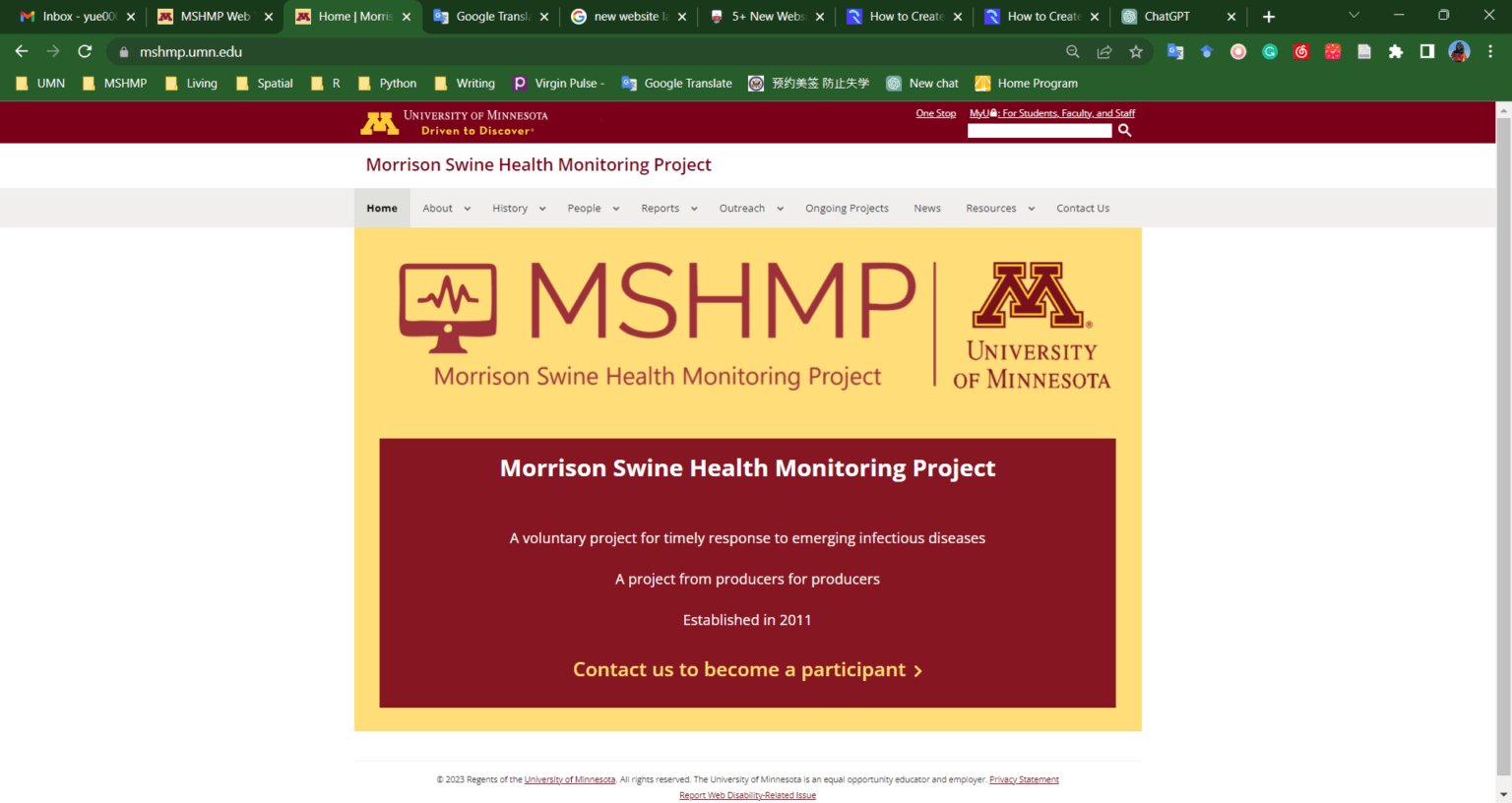
The Morrison Swine Health Monitoring Project, funded in part by the Swine Health Information Center, continues to monitor trends in pathogen incidence and prevalence. Now, a new MSHMP website optimizes the project’s information sharing ability for both the participant and swine industry communities at https://mshmp.umn.edu/. MSHMP staff say the website represents a significant milestone in their mission to enhance collaboration and communication within the swine industry.
The website contains 10 sections, including Home, About, History, People, Reports, Outreach, Ongoing Projects, News, Resources, and Contact Us. Project participants and industry stakeholders will find easy access to MSHMP outputs as it facilitates effective communication and dissemination of crucial information.
MSHMP staff understands the value of comprehensive and reliable information together with balanced data interpretation. For those seeking to stay up to date with the most current official announcements and developments, the site includes links to web pages of official institutions. For additional insights, specialized content and different perspectives, links to collaborators web pages are also included.
MSHMP is facilitating sharing of health information by tracking multiple diseases, including transport and health relationships, and is growing into adding boar stud and growing pig data to the sow information already gathered.
The Swine Health Information Center, launched in 2015 with Pork Checkoff funding, protects and enhances the health of the US swine herd by minimizing the impact of emerging disease threats through preparedness, coordinated communications, global disease monitoring, analysis of swine health data, and targeted research investments. As a conduit of information and research, SHIC encourages sharing of its publications and research. Forward, reprint, and quote SHIC material freely. For more information, visit http://www.swinehealth.org or contact Dr. Paul Sundberg at [email protected] or Dr. Megan Niederwerder at [email protected].

This month’s Domestic Swine Disease Monitoring Report brings a collection of educational materials on the bonus page with videos explaining the details and interpretation of the charts available on the PDF reports. Also, the report includes information about the decreased PRRSV-positivity in July, falling below the expected for this period based on historical trends. For PRRSV sequences, the Lineage 1C variant is the most detected in 2023, with different RFLP patterns besides the 1-4-4. For enteric coronaviruses, PEDV and PDCoV decreased the positivity in July, which is expected for the summer period. However, regional positivity remains above the expected in Kansas (PDCoV) and Illinois, Missouri, and North Carolina (PEDV). For Mycoplasma hyopneumoniae, the number of monthly submissions almost doubled in 2023, with an increased number of deep tracheal swabs being submitted, reflecting efforts to monitor the progress of ongoing Mhp control and elimination efforts. In the podcast, the SDRS hosts talk with Dr. Thomas Petznick about the PRRSV scenario in Nebraska, enteric coronavirus biosecurity strategies, and Sapovirus epidemiology.

In this month’s Global Swine Disease Monitoring Report, read an excellent summary of Vietnam granting commercial licenses for the first two domestic vaccines against African swine fever. Learn about Canada creating an FMD vaccine bank, pledging $5.6 million to establish this dedicated source. See how ASF keeps expanding in Europe with Kosovo reporting its first outbreak, becoming the 24th country in the region to do so. ASF has also re-emerged in Bulgaria, Estonia, and Ukraine. In the Philippines, spoiled frozen meat was confiscated in Bulacan province and in Thailand, pork sausages were seized at the Suvarnabhumi airport.
Copyright 2024 | Swinehealth.org | Website by Heartland Marketing Group